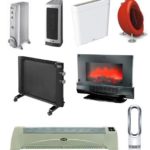To understand how to choose a heater for a summer cottage, you first need to determine whether the summer cottage will be used for permanent or long-term residence, and how large the area of the room is. Since, for example, the stove will heat up the whole house well, but it cannot be left unattended for a long time due to the danger of fire. Or a compact portable fan heater that will quickly heat up a small utility room, but cannot cope with heating a large room in a harsh winter.
Types of heaters
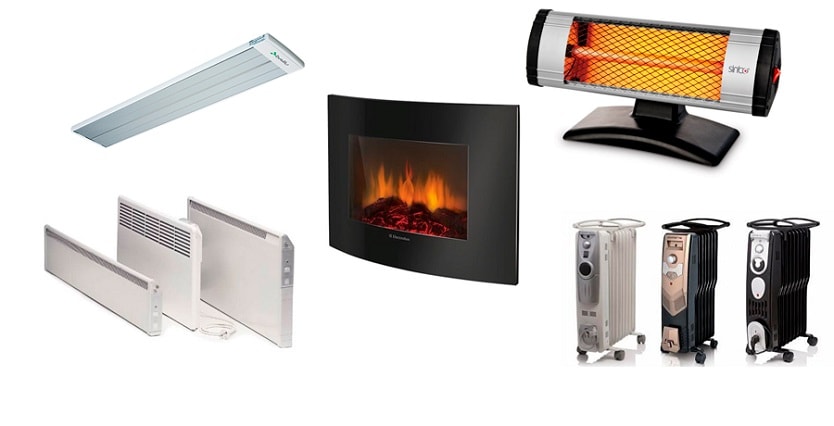
Heating systems that are installed in suburban areas are, as a rule, ordinary fireplaces and stoves. But if it is not possible to constantly monitor the operation of such heaters and the country house is not used as a permanent residence, such devices are unsafe. What kind of heater to buy for a summer cottage if it is rarely visited? It is worth considering options such as:
- Oil;
- Fan heaters;
- Heat guns;
- Gas or electric convector;
- Infrared;
- Quartz;
- Electric fireplaces.
![]() See also - Which heater to choose for a garage
See also - Which heater to choose for a garage
Oil heater
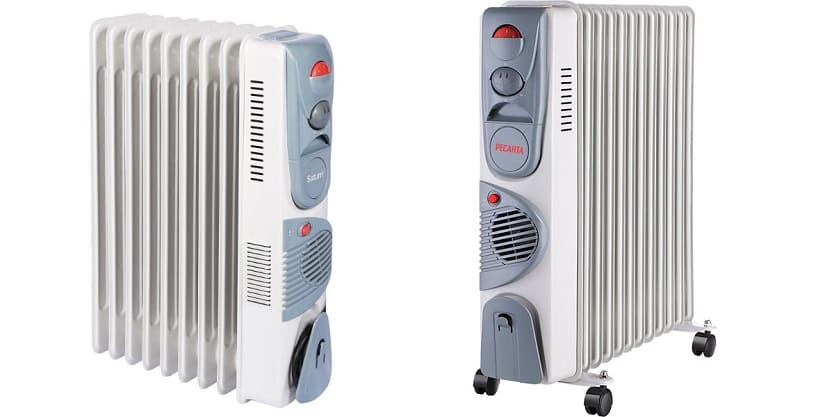
Such a device consists of several flat sections filled with mineral oil, resembling a battery in appearance. There is a heating element inside the device, which heats the oil, thus, and heats the room. Oil heaters come in the form of a solid panel, however, its only advantage is its aesthetic appearance, it produces less efficient heating of the room.
The advantages of the device are in its energy efficiency and affordable price. And also most of the models are equipped with an emergency shutdown function in the event of a fall. Despite the fact that he needs a lot of time to completely warm up the room, the heat will not go away for a long time even after the device is turned off. The main drawback of the oil heater is that it heats up to 90 degrees, and it is unsafe to keep it in a house where animals or children live.
Fan heater
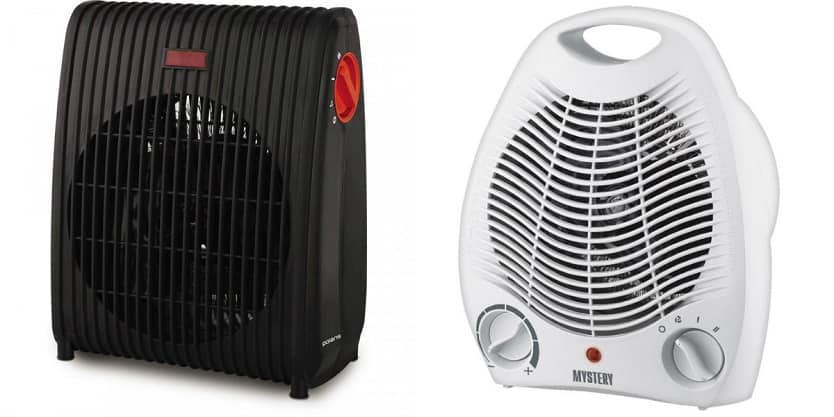
Compact in appearance, the device works by supplying air through a fan. It has a heating element (spiral) through which cold air passes, thereby heating the room. Of its advantages, the small size stands out, and the speed of warming up the room. But the disadvantages are more significant:
- high power consumption;
- “Burns” oxygen, overdries and pollutes indoor air;
- not suitable for heating large rooms;
- noisy fan operation;
- after prolonged use an unpleasant burnt odor appears.
Such a heater is good to use for short-term heating of small rooms.
![]() See also - How to connect a temperature controller to an infrared heater
See also - How to connect a temperature controller to an infrared heater
Heat gun
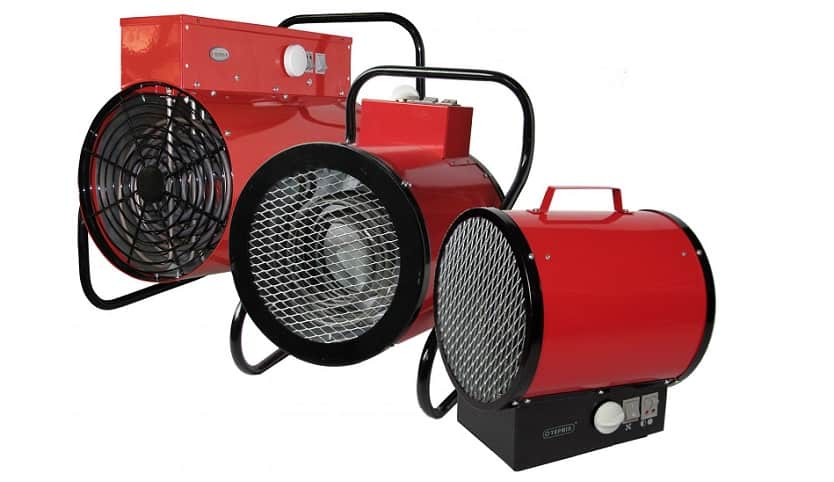
The principle of operation is the same as that of a fan heater, but it is more bulky and capable of heating a large room. It is used to warm up large rooms such as building sites or showrooms. It is not recommended for home use, since the air flow is hotter than that of the fan heater, and it is unsafe to be near it. The advantages and disadvantages are the same as the fan heater.
Gas and electric convectors
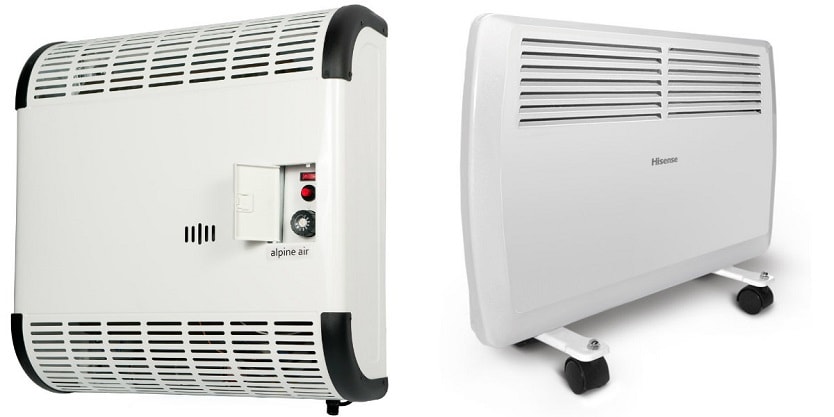
Gas convectors work on propane-butane, which you need to bring yourself in cylinders, if the country house is not connected to the gas pipeline. The principle of operation is that the convector absorbs cold air and releases it already hot. The main advantage of the gas convector is its ability to work even when the electricity is turned off. The disadvantage is that this heater needs to additionally go outside to remove combustion products and, due to the fire hazard, it cannot be left unattended for a long time.
An electric convector works on the same principle, only the source of energy is not gas, but electricity. It is the most popular choice among buyers, as it is economical, compact and warms up the room well. An electric convector is safer than a gas convector, provided that the house has good wiring.
Infrared heaters
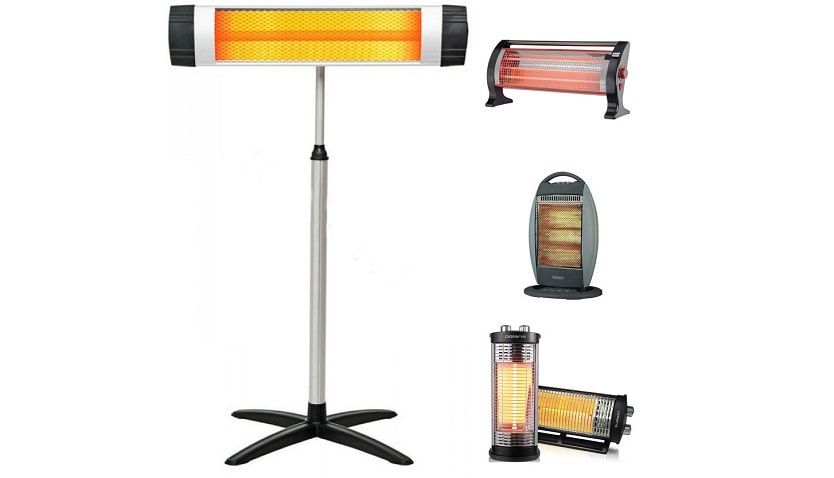
This heater, unlike others, does not heat the air itself. It emits infrared waves that heat the surface it hits, such as furniture, floors or walls. And the heated surfaces are already transferring heat into the air, warming up the room. Infrared heaters are divided into three types:
- short-wave (heating element temperature up to 800 degrees);
- medium wave (temperature up to 600 degrees);
- long-wave (up to 300 degrees).
In turn, shortwave are divided into:
- carbon (heating element-carbon fiber);
- halogen (tungsten or carbon fiber spiral);
- quartz (sand spiral).
Plus in favor of an infrared heater is the ability to put it on the street in a gazebo, or on a balcony. And also it works silently, consumes little energy and quickly heats the room. It can be placed on a wall, ceiling or floor. The disadvantage of the heater is that short-wave models burn oxygen during long-term operation, and prolonged exposure to the device's operating area will lead to poor health and dry skin.
![]() See also - Infrared heaters are harmful or not
See also - Infrared heaters are harmful or not
Quartz Heaters
This is a new type of heaters relative to their relatives. First of all, it is good that it can be left unattended, and even left on for a long time, since its heating elements are completely insulated. Heating is carried out due to the monolithic plate, which is made of quartz sand. It is compact and quiet, but not easy to find on the market.
Electric fireplaces
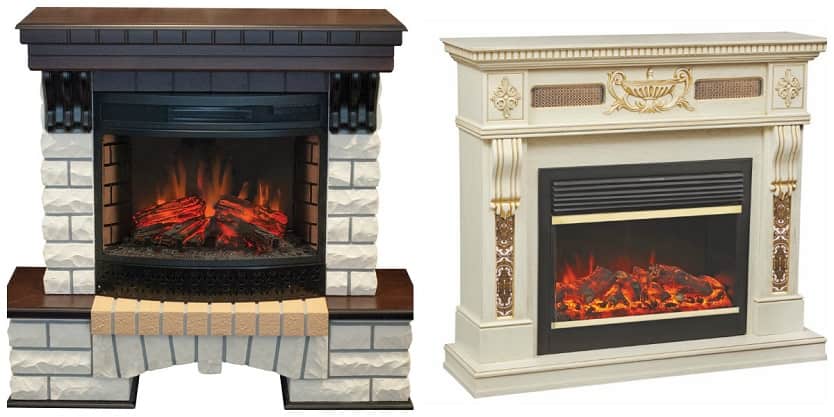
The advantage of an electric fireplace over a real one is that it does not need firewood and smoke out into the street. Otherwise, it completely imitates the appearance and properties of a real fireplace - the fire cannot be distinguished from the real one and the room will also warm up effectively. Electric fireplaces have a wide variety of designs; they can be installed anywhere in the house. The only drawback is that the electric fireplace is the most expensive type of heaters presented in the article.
Heater selection
This issue should not be solved relying on good or bad feedback, since a certain heater may be good, for example, for a small room, but a large one, it will not be able to warm up.When choosing, in addition to the size of the room, it is necessary to take into account the material of the floors and walls in the room that is planned to be heated. And also you need to pay attention to the quality of the windows to prevent heat loss. And most importantly, how often the heater will work, and how long it will remain unattended.
In choosing a heating device, a formula will help, which will approximately calculate the power required for acceptable heating of the room - 1 kW of energy is spent for every 10 m2.
For houses inhabited by animals and children, it is recommended to install infrared heaters or electric convectors - their body does not get too hot. A fan heater or infrared heater is suitable for the street. In conclusion, it is worth noting that it is recommended to choose a heater with the help of a specialist.
See also:


